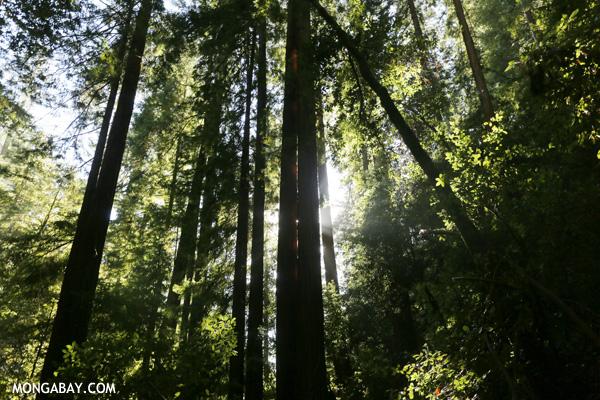As tropical forests around the world are cleared for human development, scientists and conservationists are trying to find ways to both stem their loss and reclaim areas already deforested. In a recent study, researchers investigated restoration of abandoned agricultural land in Ecuador, finding that planting trees and even re-establishing pasture may help limit conversion of more forest to farmland.
In their study, published in Nature Communications, the authors write of the problem of farmland abandonment. In the Ecuadorian Andes, where the study took place, weeds quickly colonize cleared land, making it harder and harder for it to sustain livestock. One kind of weed is particularly troublesome: a tropical bracken fern that is resistant to burning, making it difficult for farmers to get rid of. In response, farmers move on to “greener pastures,” clearing more forest in the process.
“This cycle has to be broken,” lead author Prof. Thomas Knoke from the Institute of Forest Management at Technische Universität München (TUM) said in a press release. “We’ve been investigating whether this abandoned pasture land can be recultivated, and if so, how.”
The team looked into both reforestation and re-establishment of pasture to combat problematic weeds and reduce the need for more deforestation. They examined effects ranging from economic benefits and farmer acceptance to soil quality and carbon sequestration.
They found that reforestation and re-establishment of pasture using chemical weed control and fertilizers – called “intense pasturing” – both improved the economic and ecological value of abandoned pasture. The ecological benefits of intense pasturing at the study site included improved soil quality due to fertilizer, which in turn promoted more microorganisms. However, the authors caution that the chemicals used in intense pasturing may leach out of the soil and into rivers and groundwater.
Reforestation scored higher than pasturing when it came to hydrological and climate benefits. The authors note that reforested areas showed quicker inhabitation by wildlife, and they had lower rates of erosion than nonreforested areas. The native species used in the study proved particularly effective.
“Our study also showed that afforestation with the native Andean alder had a much more positive impact on the climate and water balance than the other land use options,” said coauthor Prof. Jörg Bendix from Phillips-Universität Marburg.
The researchers surveyed local land users, finding that many viewed reforestation positively. However, farmers can’t make as much money if they don’t clear land for agriculture. To counter this, the authors propose compensating farmers for replanting trees on their abandoned fields.
“If we want recultivation concepts to be a success, the people using the land have to be engaged,” Bendix said.
The researchers’ study site was in the Ecuadorian Andes at between 1,800 and 2,100 meters in altitude (5,900 and 6,900 feet). They believe their results can be extended to other areas, particularly other tropical mountain locales such as those in Brazil or Africa.
“Abandoned agricultural land is a huge resource that is not being harnessed,” said coauthor Thomas Knoke. “The German Research Foundation (DFG) is currently funding a number of projects that are working with farmers in Ecuador to implement the findings of the study,”
Citations:
- Knoke, T., Bendix, J., Pohle, P., Hamer, U., Hildebrandt, P., Roos, K., ... & Beck, E. (2014). Afforestation or intense pasturing improve the ecological and economic value of abandoned tropical farmlands. Nature communications, 5.
This article was written by Morgan Ericsson-Davis, a contributing writer for news.mongabay.com. This article was republished with permission, original article here.




